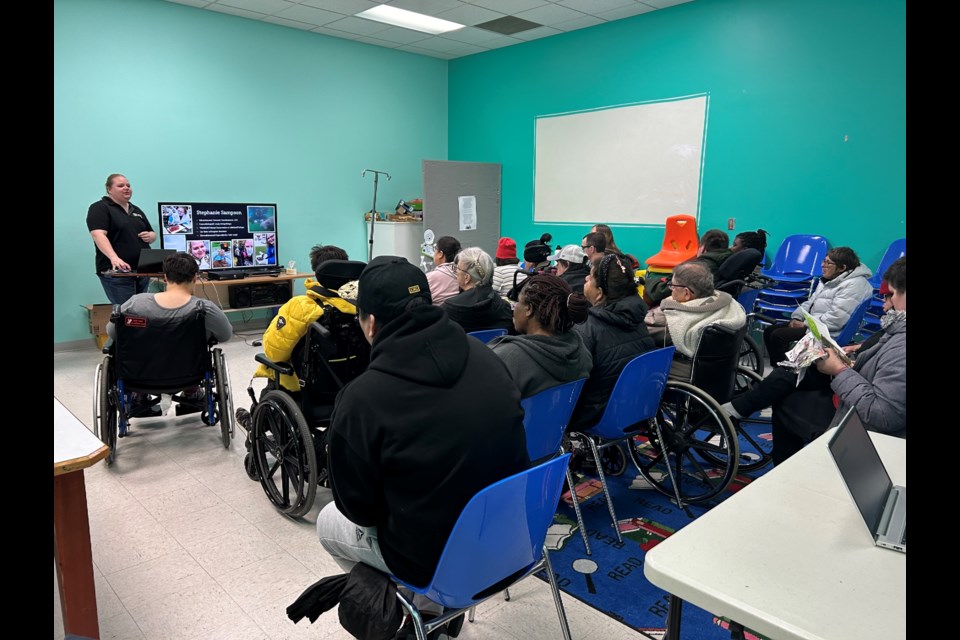ST. PAUL – Say you are in the wild and you have spotted an animal with big horns - is it an elk, a caribou, or is it a moose?
Understanding how to identify animals was one of the lessons taught during the Mammals of the Lakeland presentation at the St. Paul Library on Nov. 7, hosted by the Lakeland Industry & Community Association (LICA) Environmental Stewards.
Two informational sessions were hosted during the day - one for adults and one for children.
During the sessions, attendees learned how to tell certain animals apart and how they are connected to the environment, according to Stephanie Sampson, education and outreach coordinator at LICA.
“They learned how to tell a lynx [apart] from a bobcat . . . because they look similar,” she explained.
“We also have all of our tracks and skulls and pelts – and scat samples,” or fecal matter from animals, she said. “They’re rubber, but it helps teach the signs of different animals they might see out in the wild . . . when they’re maybe doing a nature hike.”
Sampson said she feels happy seeing the participants being engaged, including the youth who came in.
“They all want to share a story about something that they saw about wildlife,” she said, laughing.
The event is done to raise awareness about protecting the environment, said Sampson, and protecting the environment begins with understanding the environment.
This includes understanding how ecosystems function and understanding the animals living in an ecosystem, she explained.
“By learning about them [animals], it's a really good way to teach people about why it's important to protect the environment around them,” said Sampson. “Just because you don’t find [an animal] cute and cuddly doesn’t mean it’s not important.”
Ultimately, protecting animals also means protecting “the water, the air, the soil, and the plants,” she said.
If people don’t protect the environment, “We’re not going to have a healthy environment for ourselves or for the wildlife that we love,” she added.
Sampson also asks the public to stay tuned if they want to learn more about the environment, as the organization is kicking off its citizen science program.
On the LICA website, there will be a form the public can print out. When they see an animal, they can fill that form with information and send it back to LICA.
“The [information] will help our biologists in the province learn more about the animal populations and what kind of animals we have out there – or where they’re living,” said Sampson.
“We absolutely encourage photos . . . we just don’t encourage touching [the animals],” she cautioned.



